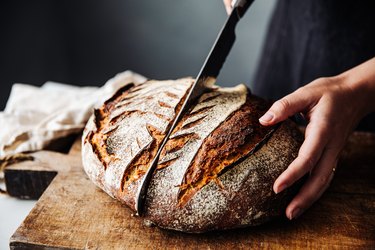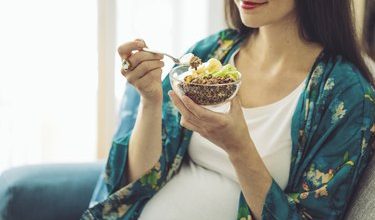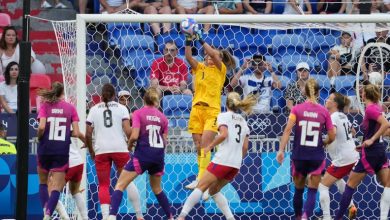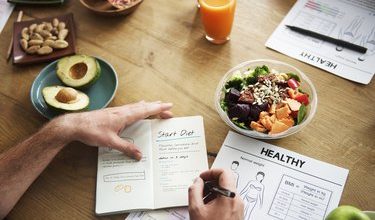Bread Can Help You Lose Weight — Unless You’re Making These 5 Mistakes

alvarez/E+/GettyImages
Bread gets a bad rap. This carb-based food is often the first that gets cut from people’s diets when they’re trying to shed pounds.
“Carbs are the most demonized macronutrient, especially when it comes to diets and weight loss,” confirms Lisa Moskovitz, RDN, founder and CEO of the NY Nutrition Group and author of The Core 3 Healthy Eating Plan.
Video of the Day
Video of the Day
But read our lips: Your bread-based fears are unfounded. Contrary to popular belief, the carbs in bread don’t automatically translate to fat cell accumulation or weight gain, Moskovitz says.
On the other hand, “depriving yourself of carbs, particularly the ones you love [like bread], may only backfire later and lead to increased cravings,” she says.
What’s more, carbs make meals more satisfying, filling and energizing, as they supply the fuel your body needs, like gasoline to a car, Moskovitz says.
All this is to say, having toast at breakfast or a sandwich for lunch can be a healthy (and yummy) part of your weight-loss plan. Just avoid these five common mistakes.
1. You Choose a Bread Lacking in Fiber
Fiber is your friend: It slows digestion, balances blood sugar and helps create an energy deficit necessary for fat-burning, Moskovitz says. Plus, high-fiber foods keep you fuller for longer, so you’ll feel satisfied eating less.
Fix it: If you want these benefits — which all support weight loss — stick with slices that contain at least 3 to 5 grams of fiber per serving, Moskovitz says.
2. The Bread Is Packed With Added Sugar
Believe it or not, added sugar, including high-fructose corn syrup, is found in many store-bought breads, Moskovitz says. Unfortunately, this sweet additive has the opposite effect of fiber: Rather than stabilizing your blood sugar, it leads to sudden spikes, she says.
But what goes up must come down. Soon after eating, your blood sugar levels will crash, and you’ll find yourself battling the belly rumbles and craving more carbs.
Fix it: To avoid this vicious cycle, aim for 5 grams or less of added sugar per serving.
Related Reading
5 Signs You’re Eating Too Much Added Sugar
3. You Opt for Refined Bread Over Whole-Grain
White breads and other refined varieties lack fiber and nutrients, which get stripped in the milling process. But without the nutrient-dense parts of the grain kernel — the bran and germ — these highly processed grains can increase your blood sugar and your appetite, Moskovitz says.
On the other hand, whole grains are a solid source of muscle-building protein and filling fiber (as well as B vitamins and minerals) that promote weight loss and weight management (not to mention lower your blood pressure and strengthen your immune system), according to the Cleveland Clinic.
Fix it: When buying whole-grain bread, look for “100 percent whole-grain” or “100 percent whole-wheat” on the label, and make sure that whole-wheat is listed as the first ingredient. Also, beware of similar-sounding terms, such as “wheat”‘ or “multigrain,” which are usually made with refined white flour, per the Cleveland Clinic.
4. You Don’t Pair Your Bread With Lean Protein or Healthy Fats
If you want to feel full and support your healthy weight-loss goals, bread goes best with a buddy, Moskovitz says. Yep, carbs need a complement — like lean protein or healthy fat — to build a balanced meal.
Fix it: To help slow down digestion and improve long-term satiety, layer your sliced bread with lean protein such as chicken, tuna or eggs, or an anti-inflammatory fat like almond butter, hummus, avocado or olive oil, Moskovitz says.
5. You Eat Bread With Other Carb-Rich Foods
Combining too many carbs in one meal (like bread, pasta and potatoes) or within a short period of time may work against your health goals.
This is especially relevant “if you’re extra-sensitive to carbs or have a history of insulin resistance,” Moskovitz says. In this case, “It may help to space out your carb consumption throughout the day,” she says.
So, when you’re having bread, don’t pair it with a bunch of other carb-rich foods. Stick to one serving of carbs per meal or snack — spaced out about every three to five hours — to help modulate blood sugar levels, Moskovitz says. “This can also prevent overeating carbs later in the day or at one sitting,” she adds.
“Additionally, if you fall under the carb-sensitive category, timing your bread-based meals so that they’re not ingested right before bed may also optimize your insulin, blood sugar and weight-loss efforts,” Moskovitz says.
Ready to Lose Weight?
Set yourself up for success with LIVESTRONG.com’s Weight-Loss Kickstart program.




